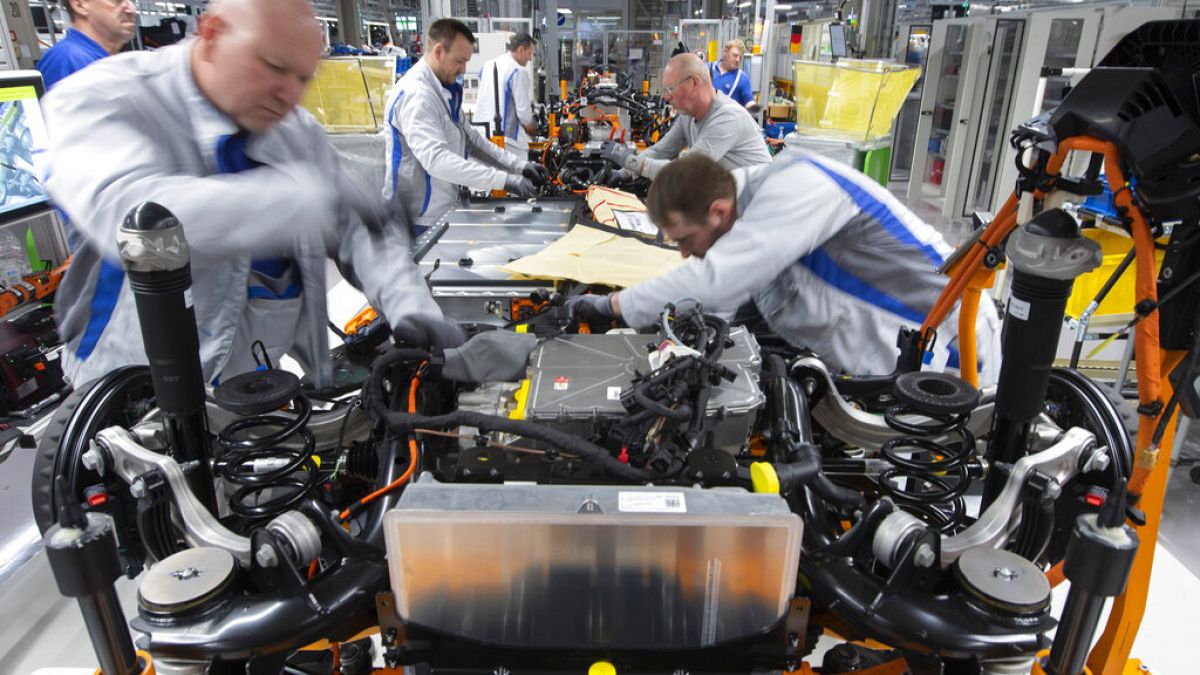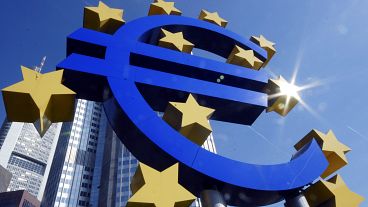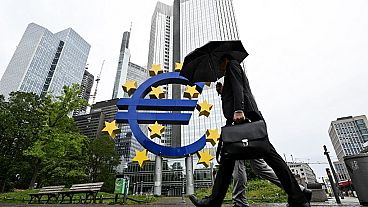The downturn in manufacturing activity softened slightly in November and business confidence is at a three-month high. Experts nonetheless say a recovery is far-off.
The Eurozone Manufacturing Purchasing Managers' Index (PMI) came in at 44.2% for the month of November, a sixth-month high and up from 43.1% in October, according to data from Hamburg Commercial Bank (HCOB) and the index provider S&P Global.
The PMI number, which is based on survey responses from around 3,000 private sector companies based in Germany, France, Italy, Spain, the Netherlands, Austria, Ireland, and Greece, looks at indicators that measure the health of the manufacturing sector - notably: new orders, output, employment, suppliers’ delivery times, and stocks and purchases.
A reading below 50 suggests economic contraction, whereas a number above this signals expansion.
“November has not been the prettiest,” said Dr. Cyrus de la Rubia, Chief Economist at Hamburg Commercial Bank, in response to the data.
He added: “Output is still on the decline, and firms have trimmed their staff for a sixth straight month. Sure, almost all the sub-indices have perked up a bit. However, the improvements are mostly timid, lacking the dynamism needed to declare an upward trend.”
New orders
Incoming new orders for companies in the eurozone were declining at a slower rate in November, although demand still remains low.
Many companies blame geopolitical and economic uncertainty for a lack of demand.
This phenomenon was also seen at a national level in Germany, France, Italy and Spain, albeit to varying degrees.
Output
Eurozone output was still decreasing significantly in November but at a slower rate than we have seen in the last few months.
The Eurozone Manufacturing PMI Output Index came in at 44.6%, a sixth-month high and up from 43.1% in November.
That said, the picture is slightly different when we look at the eurozone’s top four economies.
Among Germany, France, Italy, and Spain, Germany is the only country where the output decline is softening.
There are also national differences in terms of output charges, meaning the price of finished products sold by firms.
In the eurozone, output charges have been decreasing since May because lower costs are enabling businesses to offer more competitive prices to their clients.
This is also the case in Italy, although output prices are increasing in France and Germany.
Employment
As demand for goods is dropping, so are employment levels in the eurozone, falling at the sharpest rate since the height of the covid pandemic in August 2020.
In France, marginal employment growth continued at services companies, but manufacturing firms cut staff numbers at the most dramatic rate since May 2020.
Anecdotal evidence suggests lower staffing capacity was partially a reflection of the non-renewal of temporary contracts.
In Italy, manufacturers axed jobs at the fastest rate in over 3 years, and HCOB and S&P warn of the “profound shortage of skilled workers”.
Germany didn’t escape falling employment levels either, although job losses were relatively modest in November.
Who is in contraction?
Of the eight countries included in the eurozone manufacturing PMI, six of them are in economic decline.
Austria was in the worst state in November, closely followed by Germany and France.
That said, the manufacturing downturn in these countries is nonetheless slowing, which isn’t the case in Italy.
Only Greece and Ireland managed to grow their economies in November, with the former seeing growth improve to a three-month high.
Ireland’s economy managed to plateau after a sustained downturn.



